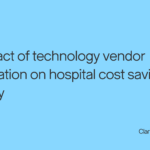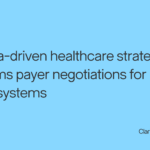Addressing the mental health crisis in the United States is a complex undertaking, due to multiple factors contributing to prevalence and severity of several conditions. Recent findings from the Clarify Health Institute highlight these growing problems and speak to a need for action to combat this crisis. According to its most recent research brief, “The Kids Are Not Alright: Mental Health Utilization Among Children and Young Adults, 2016-2022,” hospital admissions for mental illnesses rose 124% among children and young adults from 2016 – 2022. A corresponding analysis in the adult population in the US highlights similar issues among adults, showing that approximately 1 in 5 US adults was diagnosed with a mental health condition in 2022. To gain a broader understanding of the public’s attitude toward the state of mental health in the US, Clarify Health surveyed a representative sample of one thousand American adults about where they see success in mental healthcare, and where they believe we’re missing the mark as a country. Here’s what we learned: Half (50%) of Americans have experienced mental health issues. Of this group, 42% of people know at least one other person who also has, and 39% reported that they or a loved one have struggled in receiving mental healthcare. Why it matters: The fact that a staggering 50% of the population have experienced mental health issues showcases how widespread the mental health crisis is in the US. Furthermore, evidence that over one third (39%) of people have struggled to receive the care they need shows the breadth of access issues for mental health services throughout the country. This reinforces our claims data analyses showing only limited growth in the utilization of mental health primary care services for both children and adults. Over a third (35%) of Americans find Gen Z to be the most at-risk generation for mental health issues, and millennials were ranked as a close second (30%). Why it matters: With the Clarify Health Institute briefs showing a clear, continued decline in pediatric and young adult mental health over the past decade, key stakeholders must put community-based safeguards into place and invest in a strong foundation for the future of behavioral healthcare. Our survey found that 35% of respondents ranked social media as the top factor thought to affect youth mental health, with the pandemic being ranked number one by 28% of respondents. Considering the widespread role of these two factors in Gen Z’s development, this will certainly create generational differences in how mental health is viewed and experienced from one generation to the next. 89% of Americans believe mental health reform should be a priority for policymakers, and 85% believe that therapy and other mental health interventions should be universally available for children in the US. Why it matters: This indicates that the American people are looking for solutions to the mental health crisis and feel it’s time for policymakers to create reform. Most adults in the country see the value in mental healthcare for children, and this could lead to progress in instituting the necessary resources, like screenings and interventions nation-wide to ensure that no child gets left behind. Right now access to mental health services for both children and adults remains far from universally available. Nearly seven out of 10 (69%) wish that there was more accessible therapy for all ages (virtually or in-person), and nearly half of all Americans want more openings for in-person treatment options (e.g., in-patient rehabilitation) and clearer information about treatment options (47% and 48%, respectively). Why it matters: Accessibility and education are vital components of the path forward. Without them, mental health care will continue to be inaccessible for many, including those with social determinants of health (SDoH) that create hurdles in obtaining care. Virtual care is crucial for those who struggle with transportation, but it may not be right for everyone—and with the recent end of the COVID-19 public health emergency, access to virtual behavioral health is going to take a significant hit. For those who require in-patient care, there needs to be an initiative to improve the psychiatric bed shortage. Additionally, improving education and community resources are necessary for those who do not know where to start when seeking care. The Bottom Line The United States must invest in federal initiatives to boost mental healthcare accessibility and quality for all ages—but particularly for the younger generations to ensure we can create a strong foundation during their development. Key stakeholders in the healthcare ecosystem must work alongside policymakers and educators to develop a plan of action that creates a culture of understanding and acceptance around mental health issues and illnesses. This includes more research to identify the effectiveness of mental health interventions in schools, and a closer look at the impact of early identification and screenings. This crisis was prevalent before the pandemic, and it has only intensified. It’s evident a we must take a multi-faceted approach to invest in the mental well-being of our children among stakeholders to begin creating widespread change. Check out more research from the Clarify Health Institute on mental health trends in its ongoing series: The Kids Are Not Alright:
- Author Details





